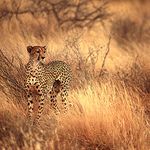- Home
- Lightroom Classic
- Discussions
- Re: Can you automate file naming of two sequences ...
- Re: Can you automate file naming of two sequences ...
Can you automate file naming of two sequences to work together?
Copy link to clipboard
Copied
I have photos of an object that has a front and back. I am wondering if there is a way I can set the file naming to sequence the first number along with a second, like so:
0001-1
0001-2
0002-1
0002-2
and so on
I want the first number to be the object's number and the 1 would mean front and 2 would mean back. I need this to be in 1 and 2 and not written out "front" and "back."
Let me know if you know of a way this would be possible!
Copy link to clipboard
Copied
I don't think this is possible, unless you are willing to select each pair of images separately and rename each pair separately.
Copy link to clipboard
Copied
Yes, but by quite roundabout steps. The intermediate stage could be to impose keywords denoting front and back. This may in any case be a useful characterisation of the images, for example so that future exports will include an informative 'front' or 'back' keyword among their metadata. You can then make use of this info to group the images into two Collections or Smart Collections or simply use filtering on a single gouping. I assume a series of objects were systematically photographed first the front then the back, so a chronological sort should match everything up. It would be up to you to police that sequence and eliminate any strays, so your renaming consistently associates front and back of the same object showing the same number.
So step by step for instance: keyword images by whether they are front or back. Add a number of matched pairs of images into a new Collection. Filter this collection by front keyword, rename those images "0001" onwards with a suffix "-1", filter the collection by back keyword, rename those others "0001" onwards with suffix "-2". For the renaming you want to pick the kind of numbering token that re-zeroes itself for each batch, not the kind that continues on from a prior sequence.
Copy link to clipboard
Copied
Yeah, I ended up just giving fronts and backs different attributes and then just exporting the fronts in sequence followed by -1 and then backs sequence -2. Thanks for the help!
Find more inspiration, events, and resources on the new Adobe Community
Explore Now
